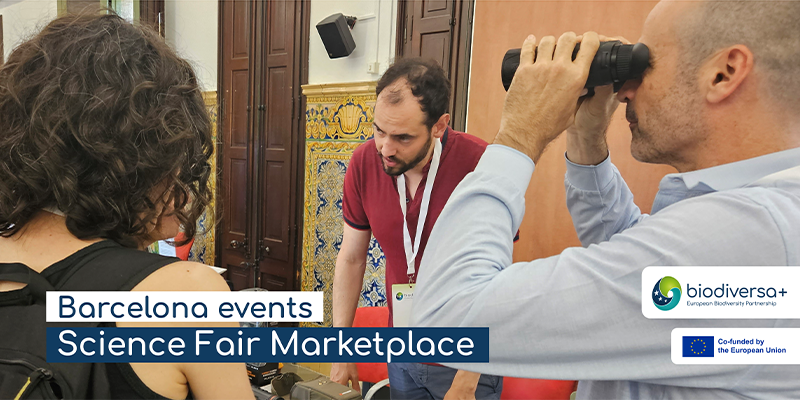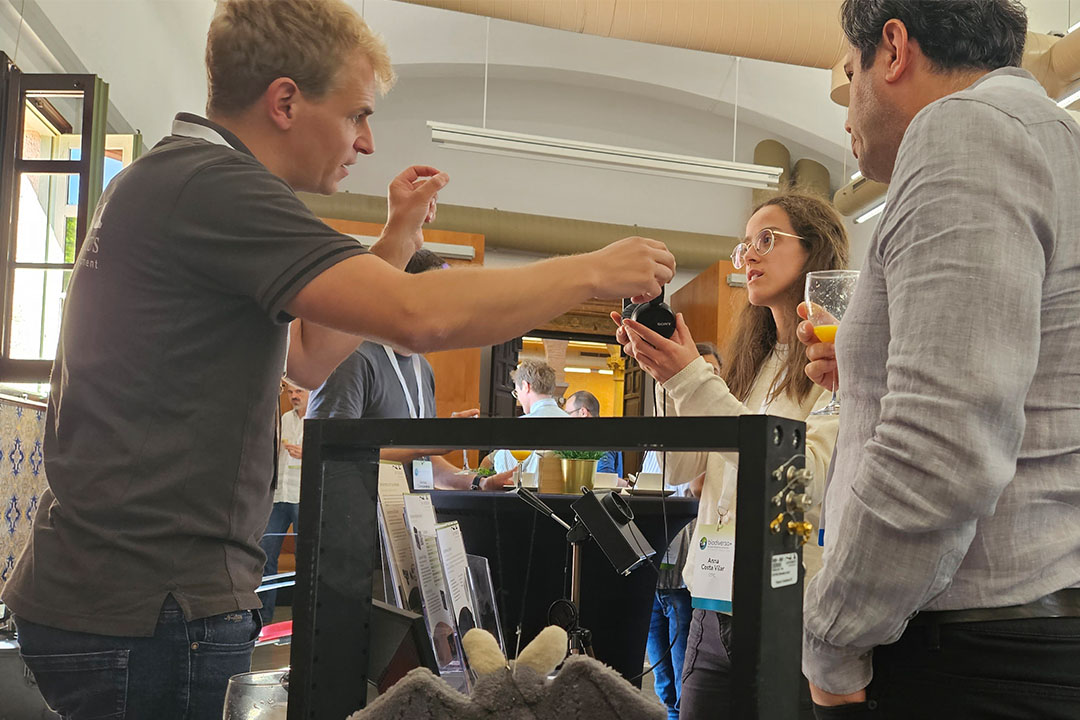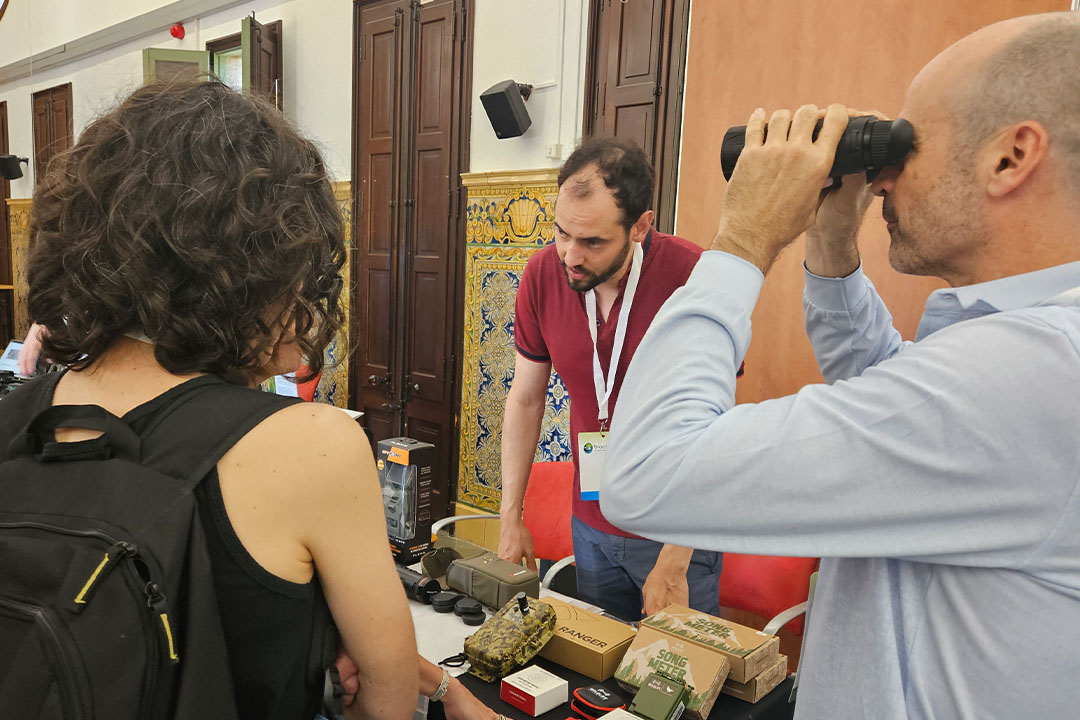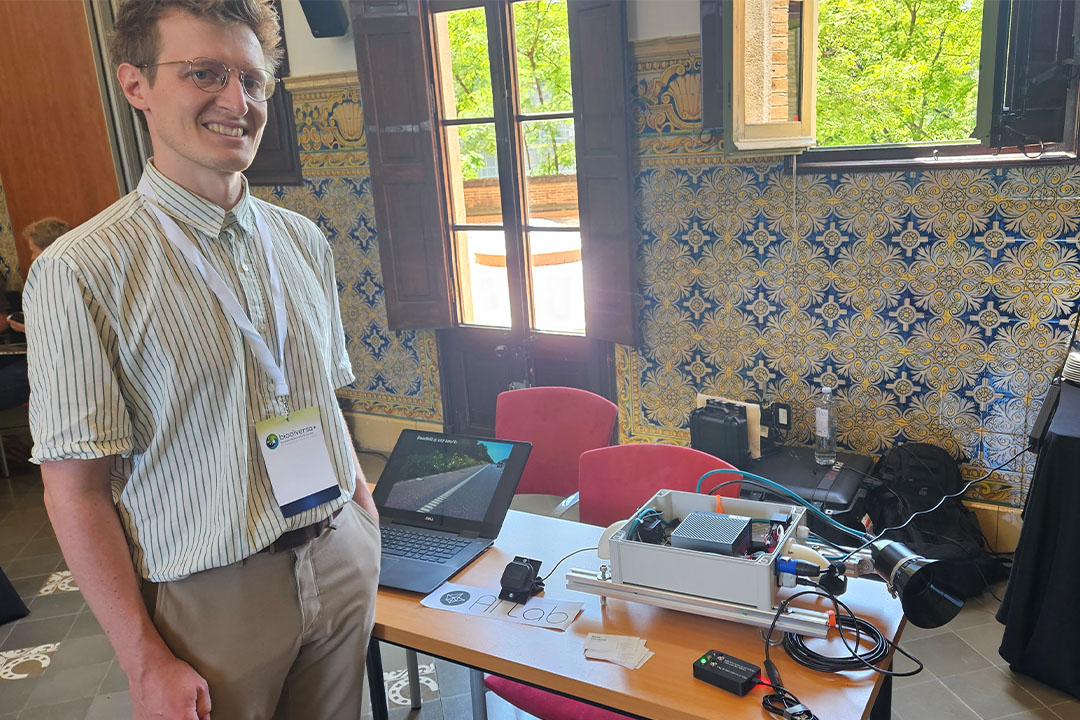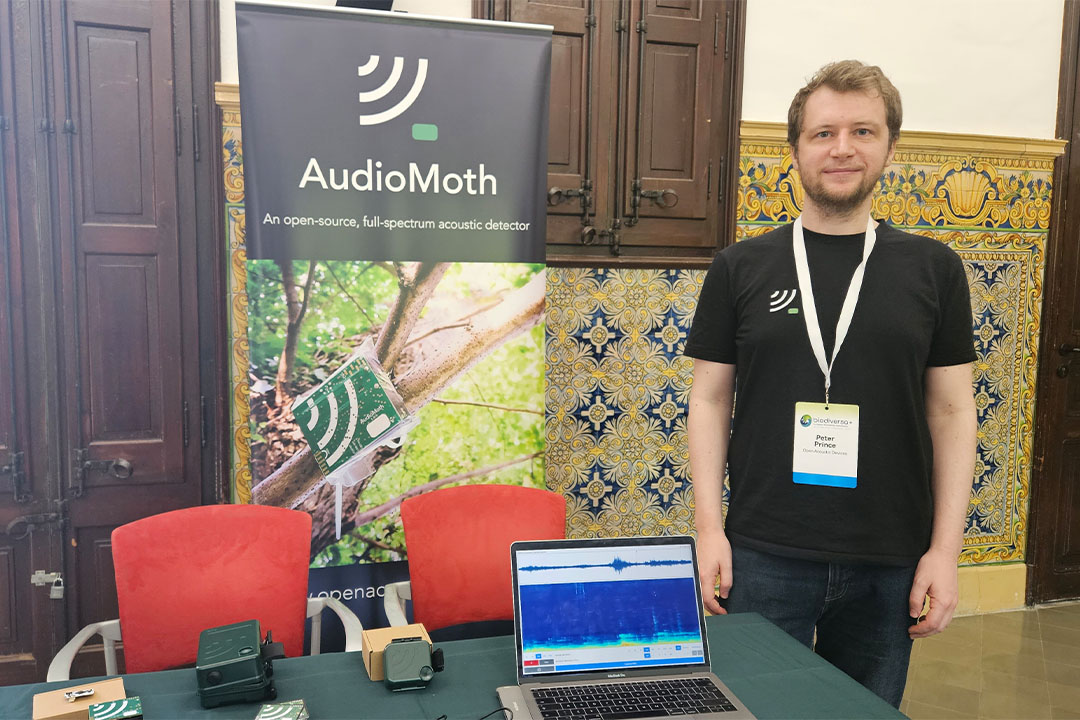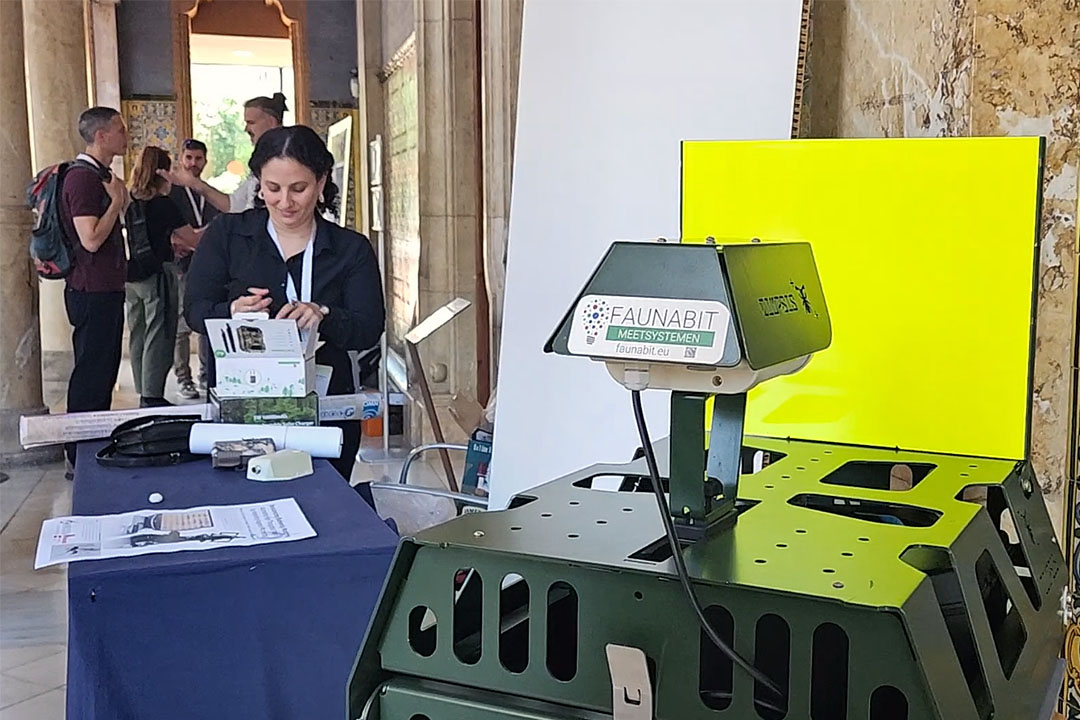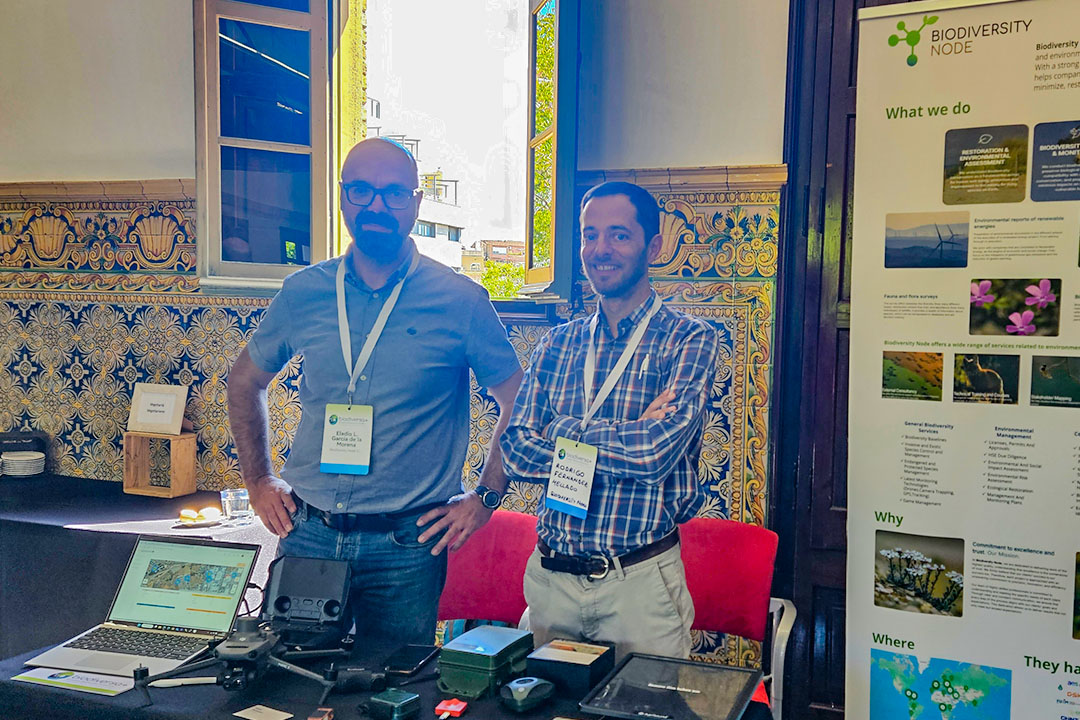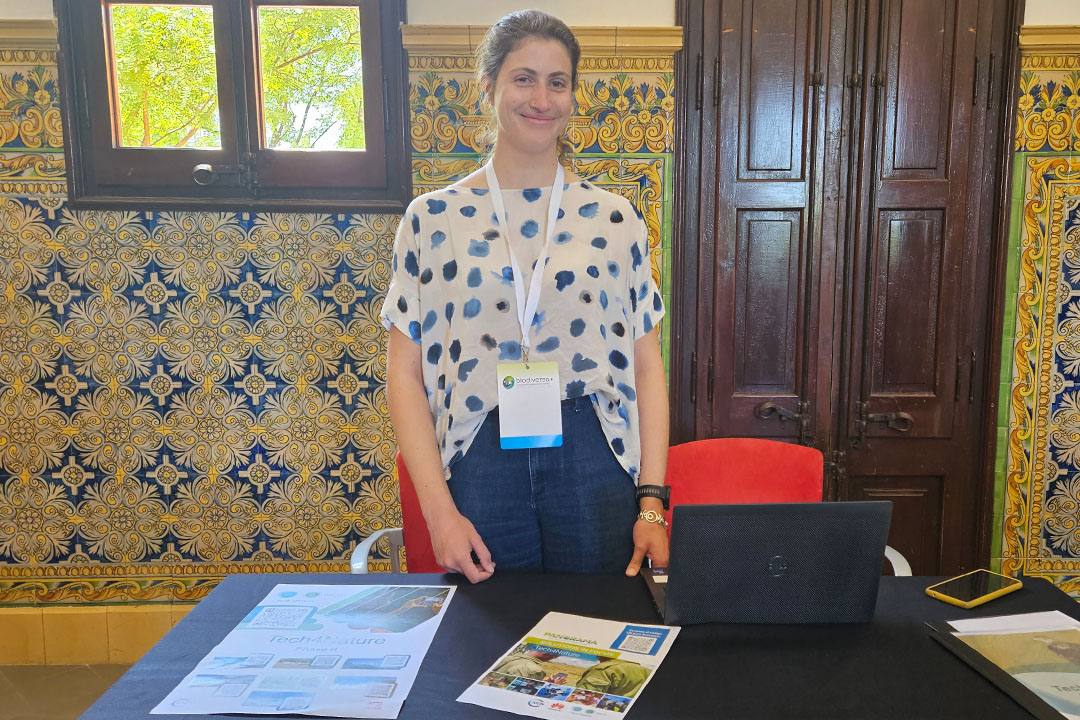As part of the broader Biodiversa+ Science Fair on biodiversity monitoring, the market fair offered a glimpse into a field in transformation. From smart sensors to scalable data infrastructures, the innovations on display pointed not just to technological progress, but to a shift in how we observe, understand, and ultimately protect nature.
Rather than a catalogue of tools, the fair surfaced a set of converging questions: What should we monitor? Who gets to participate? At what cost? And how can we translate increasingly diverse data streams into actionable ecological understanding?
Expanding our senses
A key thread running through the fair was the expansion of our sensory reach. At the visual frontier, AI Lab’s CamAlien system showcased high-speed roadside scanning in action. Initially designed to detect invasive plant species, the vehicle-mounted camera can just as easily be used to spot roadkill, litter, or infrastructure issues. The same AI-powered vision technology is being adapted for grassland monitoring and precision agriculture, detecting weeds or imbalances in crops like clover and grass, illustrating how a single technological core can serve a range of ecological and land management purposes.
On the acoustic end, two distinct approaches illustrated how sound can reshape biodiversity monitoring. Open Acoustic Devices’ AudioMoth is expanding access with its open-source, low-cost, full-spectrum recorders. These versatile devices capture everything from infrasonic elephant rumblings to ultrasonic bat calls, making bioacoustics far more accessible, especially for students and researchers in developing countries. Their variants, like the Hydramoth for marine environments and the Dev case for advanced customisation, underscore this commitment to broad participation.
By contrast, Apodemus drills deep into specific use cases with tools tailored to the complexities of bat research. Their suite, including the BatCounter, BatLure, LogCave and Pipistrelle-family detectors, is designed not just to detect bats, but to support specific tasks like counting individuals, guiding them to new roosts, or monitoring human disturbance in sensitive habitats. Where AudioMoth prioritises broad accessibility and versatility, Apodemus offers instruments geared toward targeted behavioural and conservation studies.
Tailored solutions & toolkits
Beyond individual technologies, the fair highlighted different models of support for biodiversity practitioners. Biodiversity Node, a consultancy group, presented a flexible approach to fieldwork. Their strength lies not in building hardware, but in integrating technology to fit specific conservation needs. From acoustic and ultrasonic recorders to GPS tags, drones, and AI-assisted analyses, they assemble project-specific toolkits and design tailored monitoring strategies, ensuring fit-for-purpose implementation over one-size-fits-all solutions.
Meanwhile, Oryx, a monitoring-focused retailer, plays a different role: making tools once limited to researchers more widely available to a broader community of field observers. Their catalogue ranges from AI-powered binoculars that identify birds and butterflies to thermal imagers and camera traps. Drawing on insights from users and their own field experience, Oryx also helps inform manufacturers, closing the loop between product design and practical application.
Scaling up
As individual monitoring tools become more powerful and widespread, a new set of challenges emerges: how to process, manage, and make sense of the data they produce.
The ARISE initiative, a Dutch national research infrastructure, is built around this very premise. Their showcase included a range of autonomous sensors, like solar-powered wildlife cameras with 4G connectivity, acoustic monitoring devices, and microclimate loggers, designed to enable long-term, scalable biodiversity monitoring. Their focus is not only on hardware, but also on streamlining data flows across platforms and providers, including developing standards that will allow different systems to speak to each other.
A similar systems-level approach defines Tech4Nature, a collaboration between IUCN and Huawei. Their work spans continents, supporting a wide range of monitoring technologies to improve protected area management, including through combinations of GPS, audio, and visual sensors. In Spain, for example, they’re tracking Bonelli’s eagles to understand how human activity along trails affects their behaviour. . Complementing this solution, the project is bringing together protected area managers, technology providers and research institutes to develop low-cost tech solutions for monitoring the impact of other recreational activities on vulnerable ecosystems. Beyond infrastructure, Tech4Nature is also addressing the governance layer, tackling legal and ethical issues around data ownership and intellectual property from the outset, helping set standards for future deployments.
A new framework
Whether it’s a roadside camera, a waterproof recorder, or a GPS-tag, the tools on display signal a deeper shift: from isolated observations to connected systems; from niche expertise to wider access; from raw data to integrative, actionable platforms.
The common thread? Biodiversity monitoring is no longer just a scientific endeavour. It is increasingly a design challenge, a data challenge, and a social challenge. The innovations at this fair show that progress lies not only in better tools, but in how we combine them, share them, and embed them in inclusive frameworks. As Biodiversa+ continues to catalyse this conversation, the future of biodiversity monitoring is taking shape as an increasingly intelligent, collaborative, and interconnected endeavour.
What else happened in Barcelona during the Science Fair? Read more.
